Riding the Mountain Kingdom of Bhutan
Let’s start with the question asked repeatedly in the weeks following our tour design ride in Bhutan: What’s it like?
The first thing that strikes you is cleanliness. Crossing the border from India to Bhutan is like stepping through a portal to a place 1000’s of miles away. There is no sound. (horning, a national pastime in India, is banned). There is no rubbish on the streets anywhere. There is order. Smoking in public places is banned. No brash signage shouts for your attention. Breathe deep and let the clean mountain air fill your lungs.
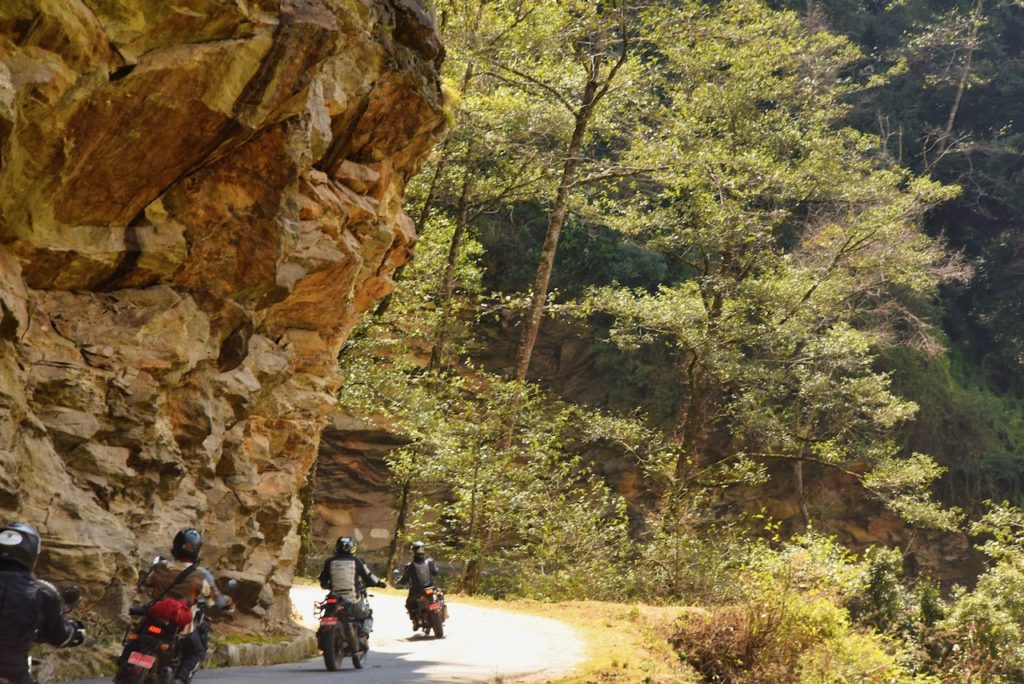
Secondly, the people. Those familiar with India would know that traffic attitudes toward ‘two wheelers’ can be an aggressive affair. In Bhutan, the car, truck or bus ahead of you will have their right signal on to inform you it is not safe to pass. When they switch to the left indicator, they are saying ‘you are good to go.’ They do not merely acknowledge your existence, they aim to protect it. Whether on the road or in a shop and whether fostered by its Buddhist roots or the guiding hand of its King, people come across as innately kind. The place creates a plane of peace and relaxation through its people.
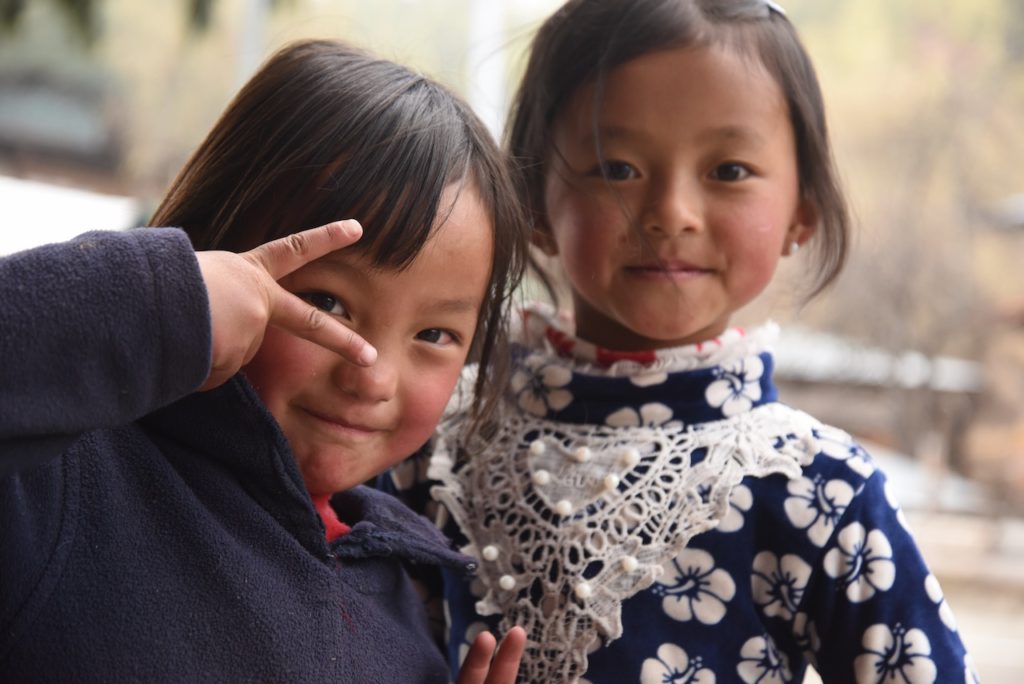
This Himalayan kingdom, closed to the outside world until the mid-70s and shrouded in mystery for some many centuries prior, finds itself tightly wedged between the superpowers of China (Tibet) and India. And while the country’s marketing machine may have succeeded in publicising, ‘Gross National Happiness’ as its guiding light, it’s how this principle manifests itself in its people that is the country’s most beautiful trait.
Bhutan is a small country, only slightly smaller than Switzerland, but its tiny population of only 770,000 and its endless, winding mountain roads make it seem like one of the most remote places on Earth. This is why, for motorcyclists and trekkers alike, it is a magnet without peer. Along its pristine rivers or perched on soaring cliffs, the landscape is a perfect symbiosis between the natural world and the one created by the Bhutanese people.
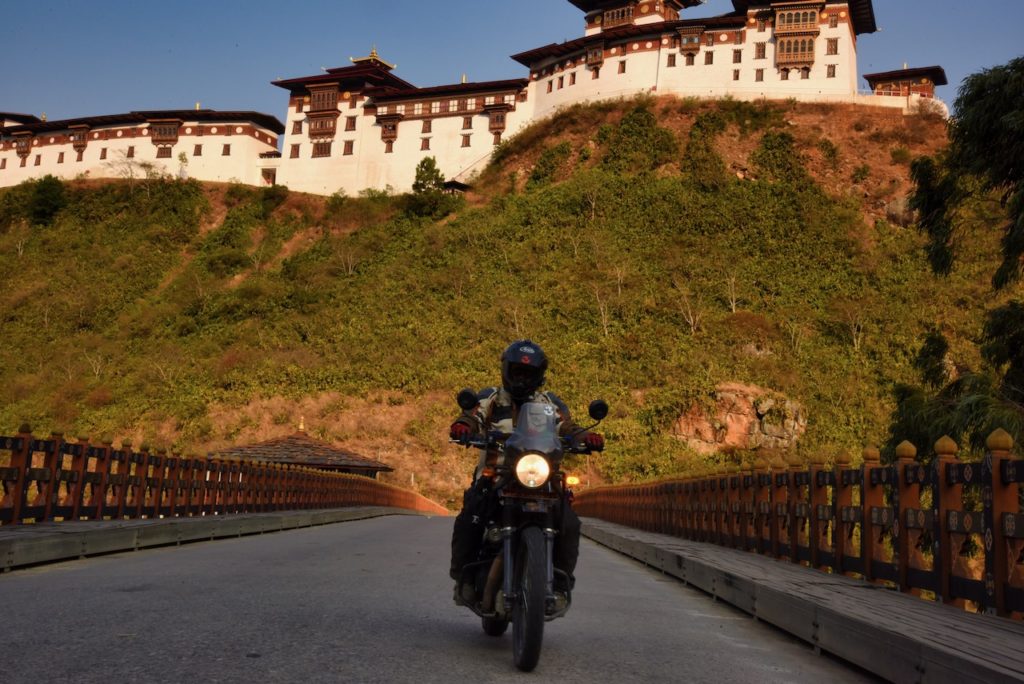
On tourism, Bhutan is famous for taking a different path, a strategy designed to grow tourism sustainably. Firstly, a traveller does not simply arrive and make their own itinerary. All travel plans need to be made through a government-certified Bhutanese tour operator. In addition, as a means of keeping over-tourism in check, the country levies a daily fee on all guests. This fee was lowered from USD250 per day to USD100 in the past year, but the effect is still palpable. Even when making the 3-hour trek to the cliffside Tiger’s Nest temple complex, without a doubt Bhutan’s most iconic site, the volume of tourist traffic is relatively low yielding a more intimate and infinitely more pleasing experience.
The Environment
Another admirable facet of the Bhutanese approach to ensuring the country retains its natural beauty for generations to come is its commitment to land preservation and the environment. Its status as one of the only carbon-negative countries in the world is driven by effective use of hydro-electric power (it uses less than it produces and exports the surplus to India) and its constitutionally mandated preservation of 60% of the country’s landmass as undisturbed forest. The current level stands at 70%. All these wonderful, responsible policies translate to one of the most rewarding travelling experiences to be found anywhere in the world. And when combined with the freedom and exposure of a Royal Enfield Himalayan as our means of exploration, Bhutan ranks as an adventure motorcycling experience like no other.
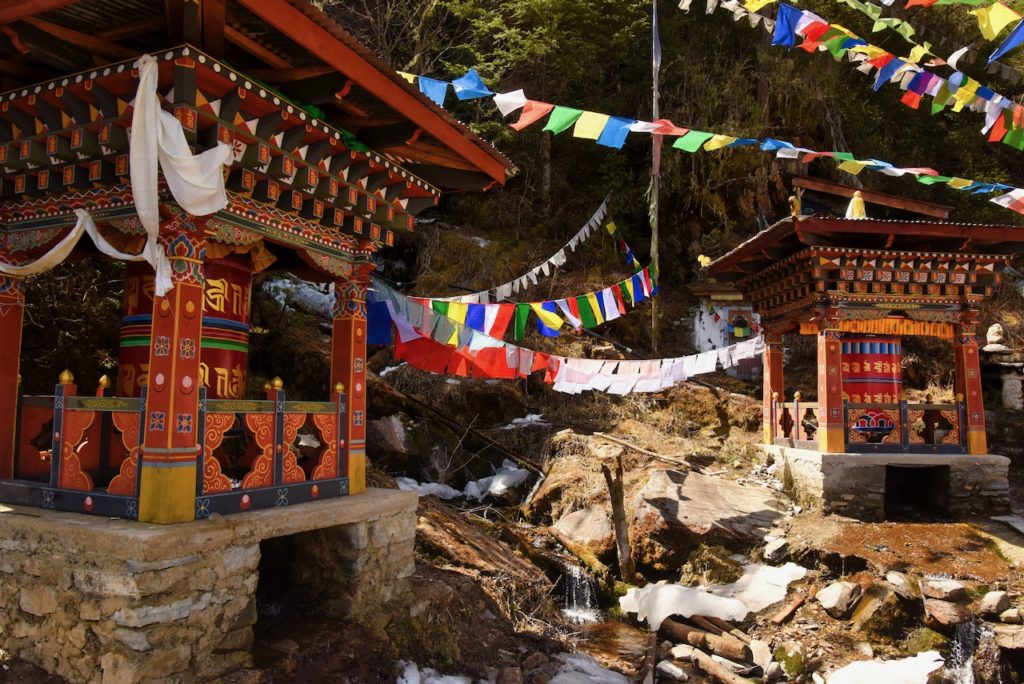
The Route and its Features
Our route took us on a 12-day exploration of a large swath of the country. The whole experience kicks off with an arrival at Paro International Airport. With a runway extending along the valley floor and mountain ranges at either end, it offers an apt introduction to the rugged topography of the country. Rather than settle in Paro at the beginning and end of the tour, we make our way via a quick bus ride up to the capital, Thimpu.
Situated at an elevation of 2,300 meters and with a population of less than 100k, Thimpu has the vibe of a ski town. With an incredibly ornate style of architecture that is uniform throughout the country, squinting your eyes you may think you have landed in the Austrian or Swiss Alps. On the bikes, it’s a short ride to one of the most impressive sights Thimpu has to offer, the Buddha Dordenma, a 51-meter tall, gilded statue of the Buddha placed on a hilltop that commands a view of the whole valley. This is a fitting spot to kick off our journey.
Heading east, we toss the bikes from side to side along sublime mountain sweepers, our groove only amplified by the magnificent vistas on the road to the glacial valley town of Gangtey and from there, Bumthang. Like elsewhere in the country, we are accompanied by a chorus of the ‘hellos’ of schoolchildren who bolt from their homes on hearing the sound of our bikes.
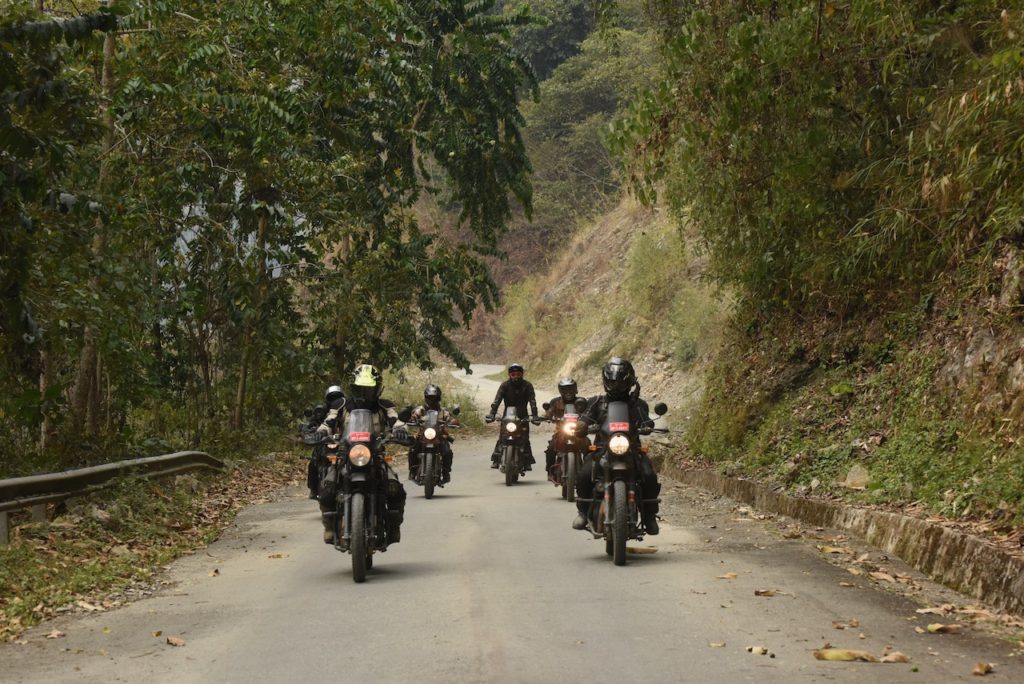
From here, the comparisons to Switzerland become even more pronounced. The elegant consistency of Bhutanese architecture draws parallels to that of the Swiss countryside, and the perfect road surfaces and endless mountain views could lead you to order rösti at lunch instead of the ubiquitous momos. We are only shaken from the tarmac bliss by a rough transition to rocks and gravel 12 kms from our final resting place for the night. A bit of grit was more than welcome…this is why we came!
It was not until we rolled out of the beautifully named town of Tingtibi and its good roads and beautiful scenery that we finally begin to descend. Here, the vegetation becomes more tropical we near the Indian border. The town of Gelephu straddles India and Bhutan and introduces us back to civilisation and Bhutanese whiskey for a night.
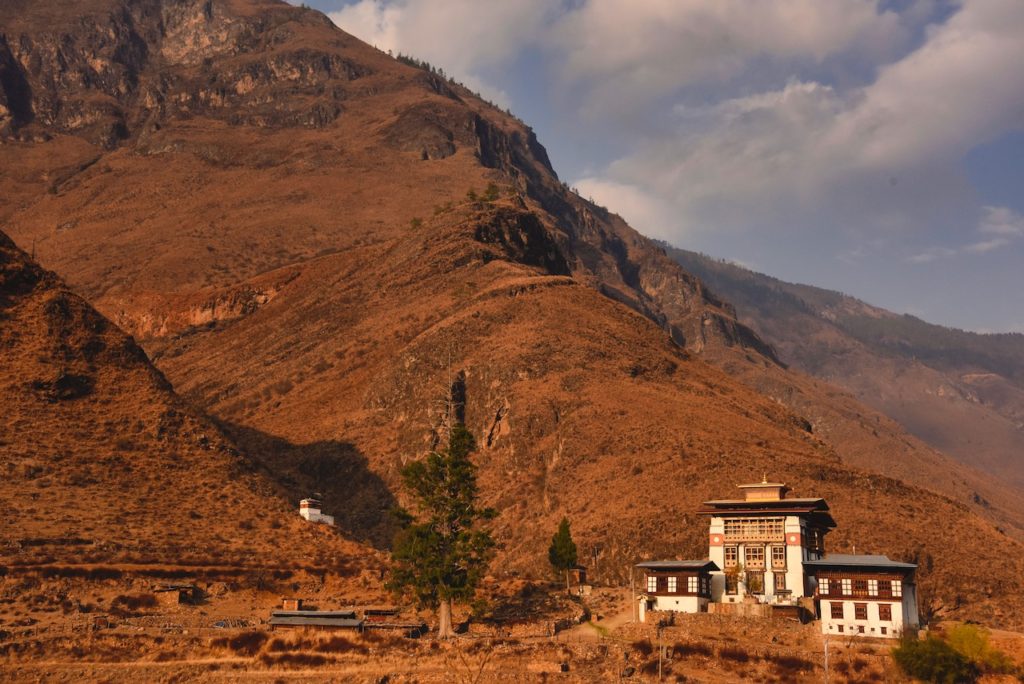
Whiskey haze somewhat shaken, the next stint, takes us along the Indian border for 35km of valley floor riding and the only straight roads in the country. From there, we once again start climbing passing dramatic, remote cliff-side waterfalls along the way. Towards dusk, we reach the town of Punakha, a beautiful town and home of the most striking example of Bhutanese architecture, Punakha Dzong or fortress. A day off the bikes provides some latitude to visit the Dzong, try our hand at the national pastime, archery, and a meal at a now famous homestay kitchen high in the hills around Punakha.
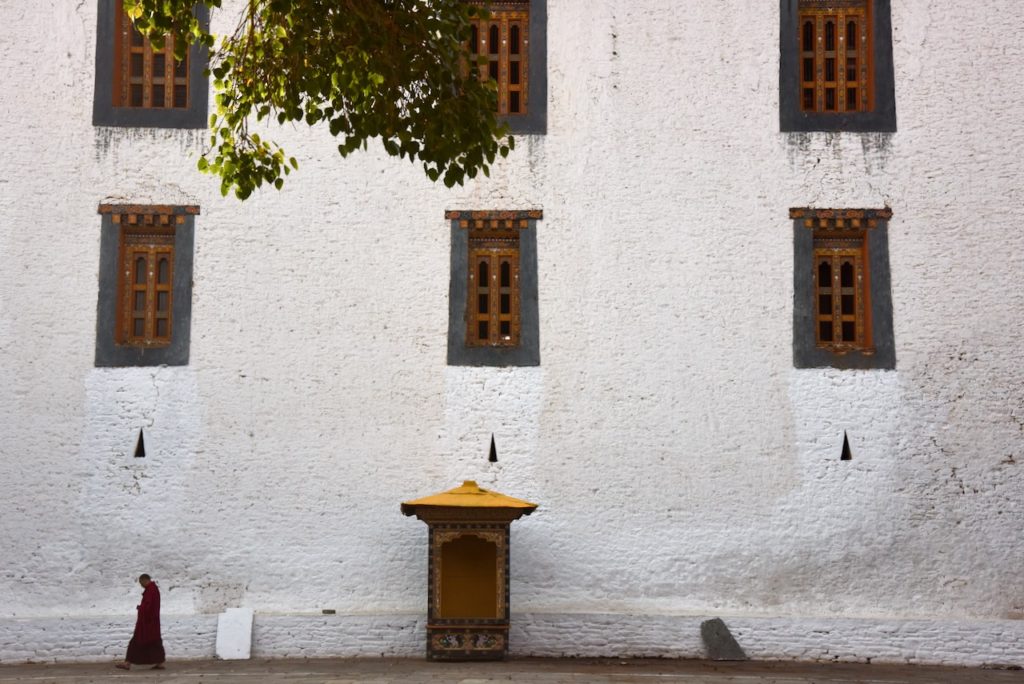
Our final stretch to Paro takes us over the highest motorable pass in Bhutan, the 4,000-meter Cheli-La Pass. Back in town, the Paro valley is a lovely way to end the adventure. Willow trees and apple orchards line the roads, rustic farmhouses and temples augment the beautiful rice fields, and verdant hills rise on either side to create a beautiful and serene whole.
The Conclusion
There is simply no place on Earth like Bhutan. The mountain vistas are endless, the natural beauty of its rivers and waterfalls are untouched, the people are the kindest found anywhere, and its architecture, pervasive throughout the country, is in complete harmony with the landscape. For the motorcycle adventurist, it is heaven. The 24,000 curves, beautiful accommodations, exotic food and the kindest people on Earth will make you fall in love.